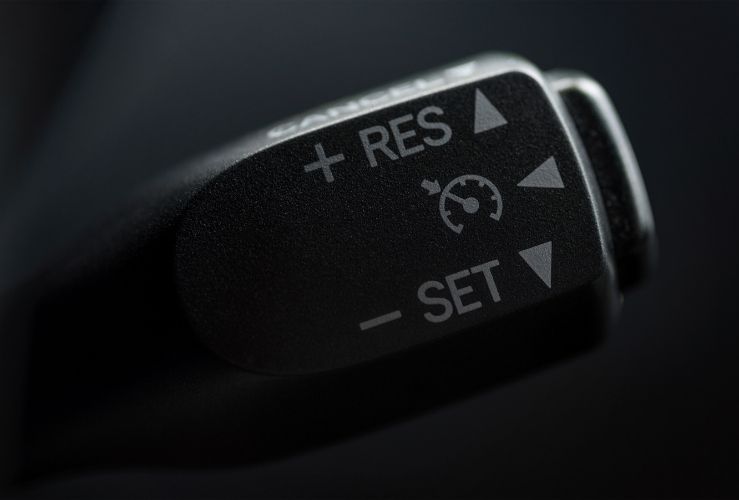Table Of Content

Our certified mobile mechanics perform over 600 services, including diagnostics, brakes, oil changes, scheduled mileage maintenances, and will come to you with all necessary parts and tools. Surprisingly, the most common "failure" is the system being turned off. If the cruise control is not operating for you, check that you haven’t turned it off. There's some hot EV metal coming our way, and this is how they'll shape the automotive industry going forward.
Looks like you've reached your saved article limit!
When they’ve released the clutch, the cruise control picks up where it left off — no additional button press required. As you approach your desired speed, your throttle will slow down, which helps keep your speed at the correct setting on your cruise control system. Cruise control was originally designed to be used on long drives and road trips when it’s possible to maintain a constant speed. The system is made up of the steering wheel controls, an input from a speed signal, an output to hold the speed steady, and an output to shut the system off. Adaptive cruise control is what makes semi-autonomous driving possible.
CarBuzz

Even more advanced systems will automatically get your vehicle moving again once the car ahead travels forward, though sometimes with the tap of the gas pedal. To use cruise control, you can typically press buttons on your steering wheel to activate the system, set your speed, adjust your speed up or down within the system, and deactivate the system. Using cruise control lets you set a speed for your car to maintain even if you take your foot off the gas. Cruise control can also prevent speeding and increase fuel efficiency by limiting unnecessary acceleration and braking. With adaptive cruise control, your car uses radar and laser sensors to detect the speed of vehicles ahead and then adjusts your own speed accordingly to keep a safe distance.
Set distance for ACC systems
Rain, snow can affect adaptive cruise control - The Providence Journal
Rain, snow can affect adaptive cruise control.
Posted: Sat, 06 Oct 2018 07:00:00 GMT [source]
You can turn it on, set your preferred speed, (under the speed limit, right?) and just cruise. You don’t have to worry about maintaining your speed, and you can enjoy a smooth driving experience. Modern systems, often termed adaptive cruise control (ACC), are far more advanced. These systems utilize several sensors to automatically keep an appropriate following distance from the preceding car.
With cruise control, drivers need to brake to slow down as they close in on a slower vehicle in traffic. With adaptive cruise control, the system makes these braking inputs automatically, and the vehicle speeds back up to its pre-set cruising speed once traffic clears. Cruise control work with a manual transmission just the same way it does with an automatic. Drivers set their cruising speed with a button press, and the system works the throttle automatically to maintain the desired cruising speed as evenly as possible.
What Is Adaptive Cruise Control (ACC)?

For safety reason most systems do not work below 30 mph (48 km/h). The brain of a cruise control system is a small computer that is normally found under the hood or behind the dashboard. It connects to the throttle control seen in the previous section, as well as several sensors. The diagram below shows the inputs and outputs of a typical cruise control system.
How Does My Car’s Cruise Control System Actually Work?
Let's Debunk The Idea That It's Not Safe To Use Cruise Control In The Rain - Jalopnik
Let's Debunk The Idea That It's Not Safe To Use Cruise Control In The Rain.
Posted: Wed, 31 Jul 2019 07:00:00 GMT [source]
Our goal is to establish an auto repair process that is less stressful and much more trustworthy for everyone involved. Our website hosts a car repair Estimator that gets rid of that "ripped-off" feeling. We also provide matches to local Certified shops that are guaranteed to do repairs with quality parts, a fair price, and a trained, awesome staff. The integral factor is a way in which the speed of a car is calculated over time. This system measures the actual speed of your car over a certain distance and then measures the intended speed of your car over the same distance.
One-off 1967 Exemplar I show car highlighted bronze benefits
In many cases with modern cars, it’s generally easier and more cost effective to just opt for a unit equipped with cruise control from the factory. Cruise control is widely available as standard equipment on most modern vehicles. If your car is moving relatively slowly compared to the speed set on your cruise control system – say, 50 mph instead of 60 mph – your proportional control will begin accelerating quite a bit.
Tesla Cybertruck Recall: Unintended Acceleration
Each car with cruise control has a basic computer under its dashboard, usually known as a PID (Proportional-Integral-Derivative Control) system. While wheel alignment and balance both contribute to a smoother ride, the services are quite different. A wheel alignment makes sure your tires contact the road in the correct way... Have you ever been confused as to the sounds coming from your vehicle when you brake? From grinding and rattling to thumping and squealing, you can learn how to decode...
For instance, the cruise control pictured below can accelerate or decelerate the car by 1 mph with the tap of a button. There are also several important safety features -- the cruise control will disengage as soon as you hit the brake pedal, and it won't engage at speeds less than 25 mph (40 kph). Older cable-based cruise control systems seem more prone to this rare problem, in which the cable can slip or bind, making the throttle stick into position. More modern vehicles with electronic throttle and monitoring systems make this problem even less likely.
It’s designed to help reduce driver fatigue in stop-start traffic. With adaptive cruise control, the vehicle will also automatically slow down and speed up to maintain a safe position in traffic. By now, you may have picked up on a potential drawback of cruise control — keeping a steady speed is harder to do (and possibly dangerous) when there are other drivers in front of you. In terms of mechanical speed control, an actuator is employed to which a cable is connected. This setup actuates the throttle valve, effectively performing the same job as you would if you depressed the gas pedal with your foot. Another component is the speed control module, effectively the "brains" behind the system that remembers the desired speed.
All the traffic passing by you slows slightly and stares just a bit longer than usual. The officer walks up to your window, tears the page from his pad and hands it through the window. With an admonishment to drive slower, he tells you to have a nice day and leaves you staring at your speeding ticket. So, what is an ACC system from BMW and how does it differ from one made by Audi or Mercedes?
This new technology, called adaptive cruise control, uses forward-looking radar, installed behind the grill of a vehicle, to detect the speed and distance of the vehicle ahead of it. The cruise control system controls the speed of your car the same way you do -- by adjusting the throttle position. But cruise control actuates the throttle valve by a cable connected to an actuator, instead of by pressing a pedal. The throttle valve controls the power and speed of the engine by limiting how much air the engine takes in (see How Fuel Injection Systems Work for more details). The cruise control system actually has a lot of functions other than controlling the speed of your car.

No comments:
Post a Comment